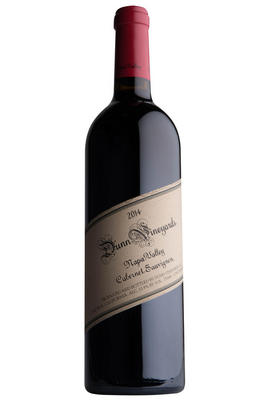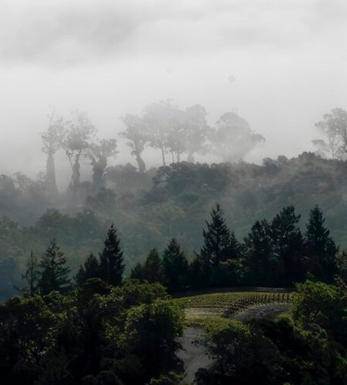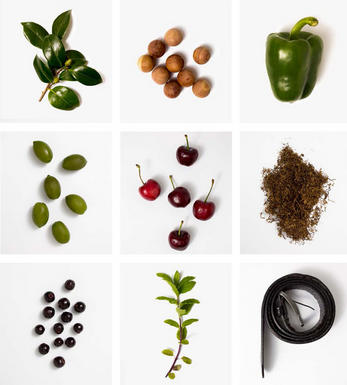
2014 Dunn Vineyards, Cabernet Sauvignon, Napa Valley, California, USA

Critics reviews
Lisa Perrotti-Brown - 29/06/2018
About this WINE

Dunn Vineyard
Randy Dunn established his reputation as a top class Cabernet Sauvignon producer as winemaker at the renowned Caymus estate in the 1970s and early 1980s. Since 1979 he has been producing a mere 5000 cases a year from his Howell Mountain winery.
His vineyards lie on red-stony soil which is mixed occasionally with volcanic ash. They are situated high up on Howell Mountain, above the famous Napa Valley fog - growing conditions are cooler and windier, although night- time temperatures are warmer and the grapes often ripen ahead of those on the valley floor.
The wines are matured in French oak barrels (40% new) for 30 months. They are huge, dense, massively structured Cabernet Sauvignons that demand extended bottle ageing. The patient are rewarded with some of the most concentrated, rich and cassis-laden wines that rival the very best Californian Cabernets for longevity and sheer quality.

Howell Mountain
Howell Mountain is situated in the eastern hills of the Napa Valley and is known for producing some of California’s most sought-after and acclaimed wines, particularly Cabernet Sauvignon and other Bordeaux varietals. What sets it apart is its significant elevation. Vineyards in Howell Mountain typically range from 1,400 to 2,200 feet (425 to 670 meters) above sea level, providing a unique microclimate influencing the grapes’ growing conditions.
The higher elevation results in cooler temperatures than the valley floor. The mountain’s vineyards often experience cooler evenings, benefiting grape ripening. The temperature variation between day and night, known as diurnal temperature variation, helps grapes develop complex flavours while retaining good acidity.
While the elevation and volcanic soils offer distinct advantages, they also present challenges, including cooler temperatures that can delay ripening, steep slopes that require careful vineyard management, and irrigation due to lower rainfall at higher elevations.
The region’s soils are mainly volcanic, with a mix of rocky, well-draining soils. These volcanic soils contribute to the region’s distinct terroir, often imparting mineral notes and a unique character to the wines. The rocky terrain also requires vine roots to penetrate deeply in search of water and nutrients, leading to concentrated flavours in the grapes.
While Howell Mountain is known for its Cabernet Sauvignon, it also produces other Bordeaux varietals, including Merlot, Cabernet Franc, Petit Verdot, and Malbec. Zinfandel and Chardonnay are also grown in smaller quantities.

Cabernet Sauvignon
The most famous red wine grape in the world and one of the most widely planted.
It is adaptable to a wide range of soils, although it performs particularly well on well-drained, low-fertile soils. It has small, dusty, black-blue berries with thick skins that produce deeply coloured, full-bodied wines with notable tannins. Its spiritual home is the Médoc and Graves regions of Bordeaux where it thrives on the well-drained gravel-rich soils producing tannic wines with piercing blackcurrant fruits that develop complex cedarwood and cigar box nuances when fully mature.
The grape is widely planted in California where Cabernet Sauvignon based wines are distinguished by their rich mixture of cassis, mint, eucalyptus and vanilla oak. It is planted across Australia and with particular success in Coonawarra where it is suited to the famed Terra Rossa soil. In Italy barrique aged Cabernet Sauvignon is a key component in Super Tuscans such as Tignanello and Sassicaia, either on its own or as part of a blend with Sangiovese.


Buying options
Add to wishlist
Description
Deep garnet-purple in color, the 2014 Cabernet Sauvignon has a wonderfully compelling, bright, vibrant nose of kirsch, black raspberries and fresh blackcurrants with touches of lavender, bay leaves, pencil shavings, wood smoke and tobacco. The palate is medium to full-bodied, concentrated and packed with vivacious red and black fruit layers, supported by firm, grainy tannins and oodles of freshness, finishing long with an enticing herbal lift.
Lisa Perrotti-Brown - 29/06/2018
wine at a glance
Delivery and quality guarantee